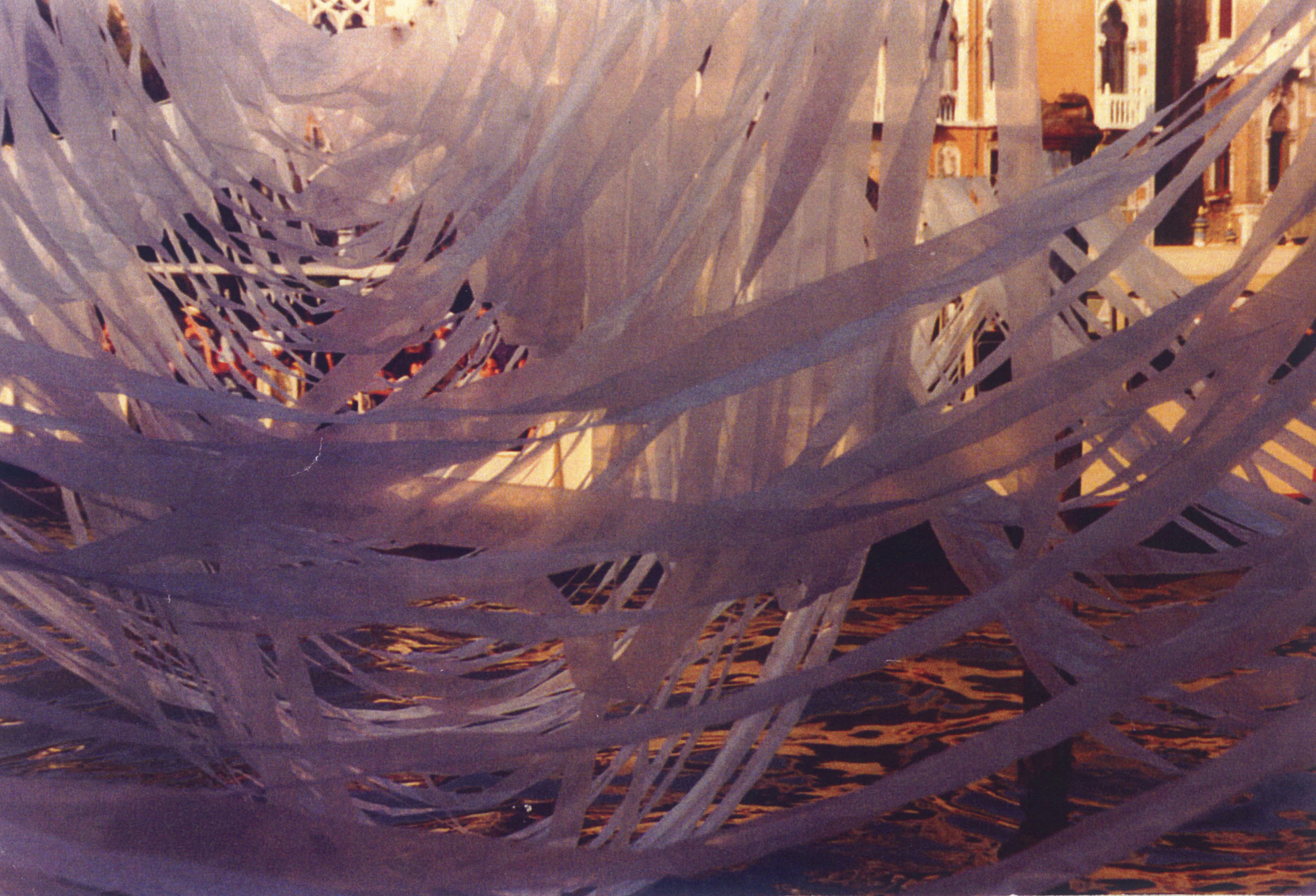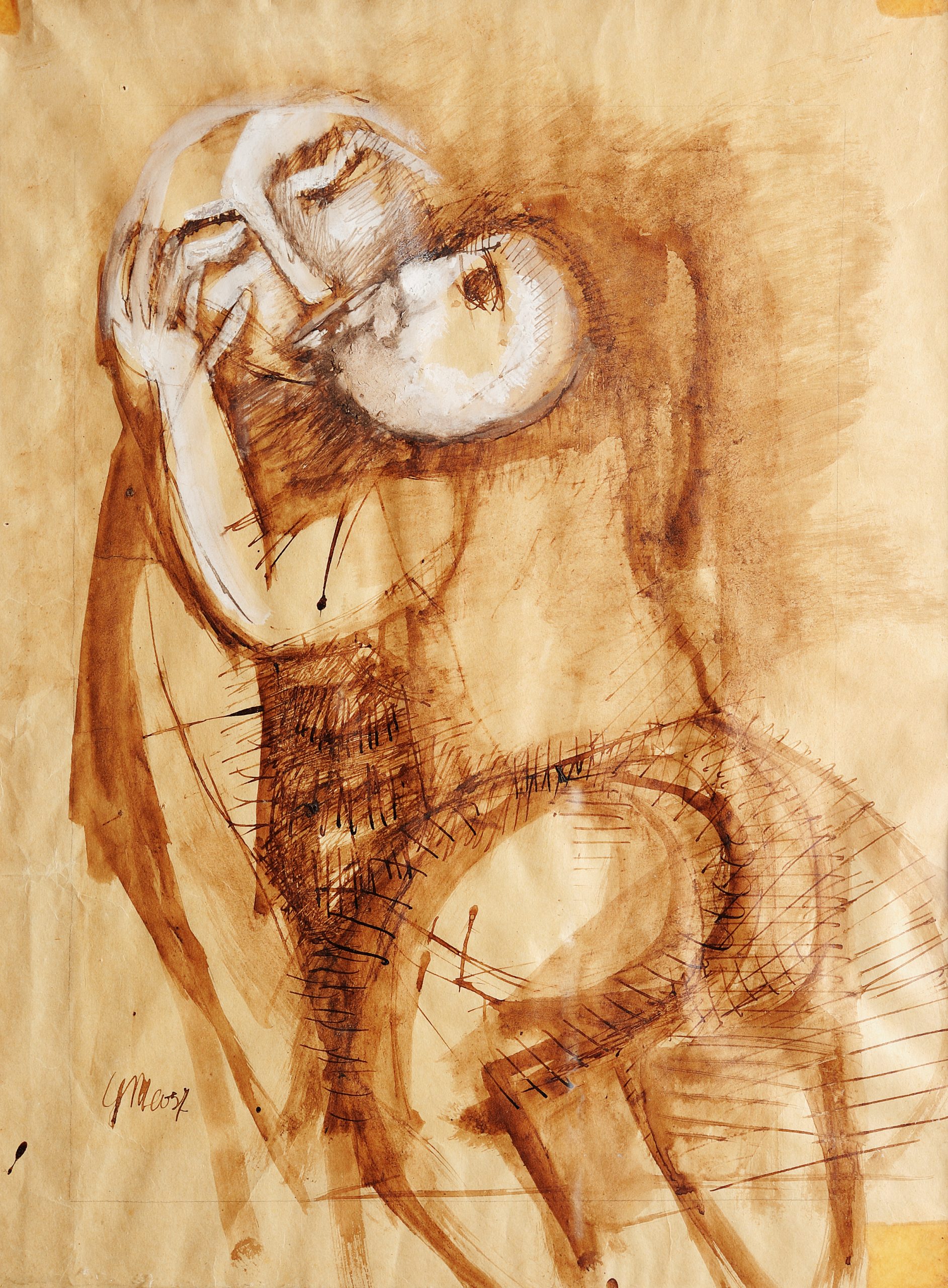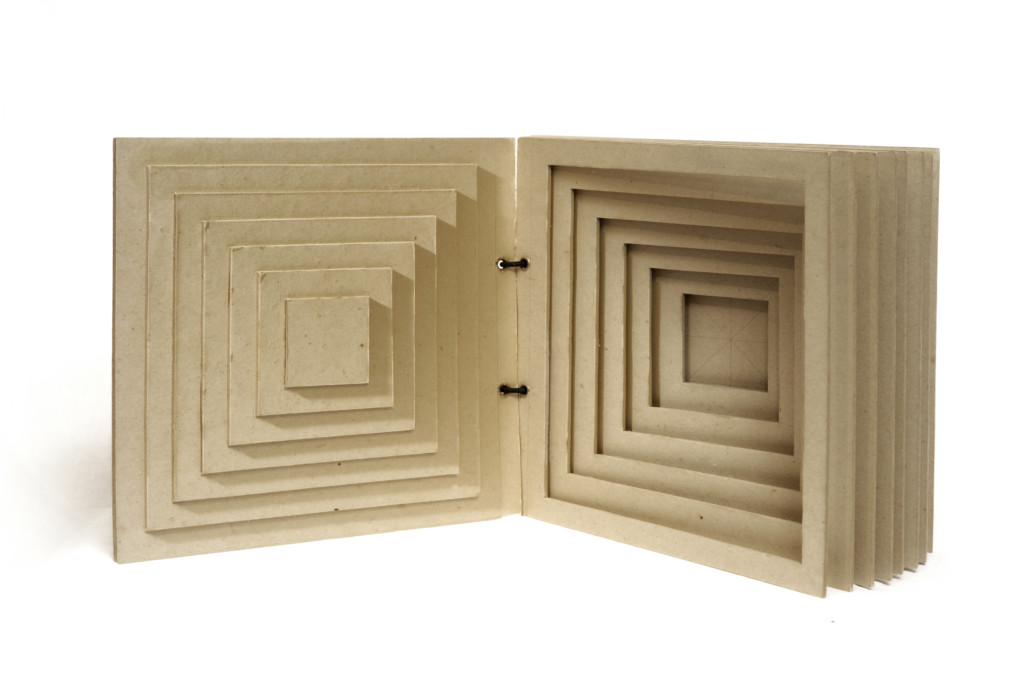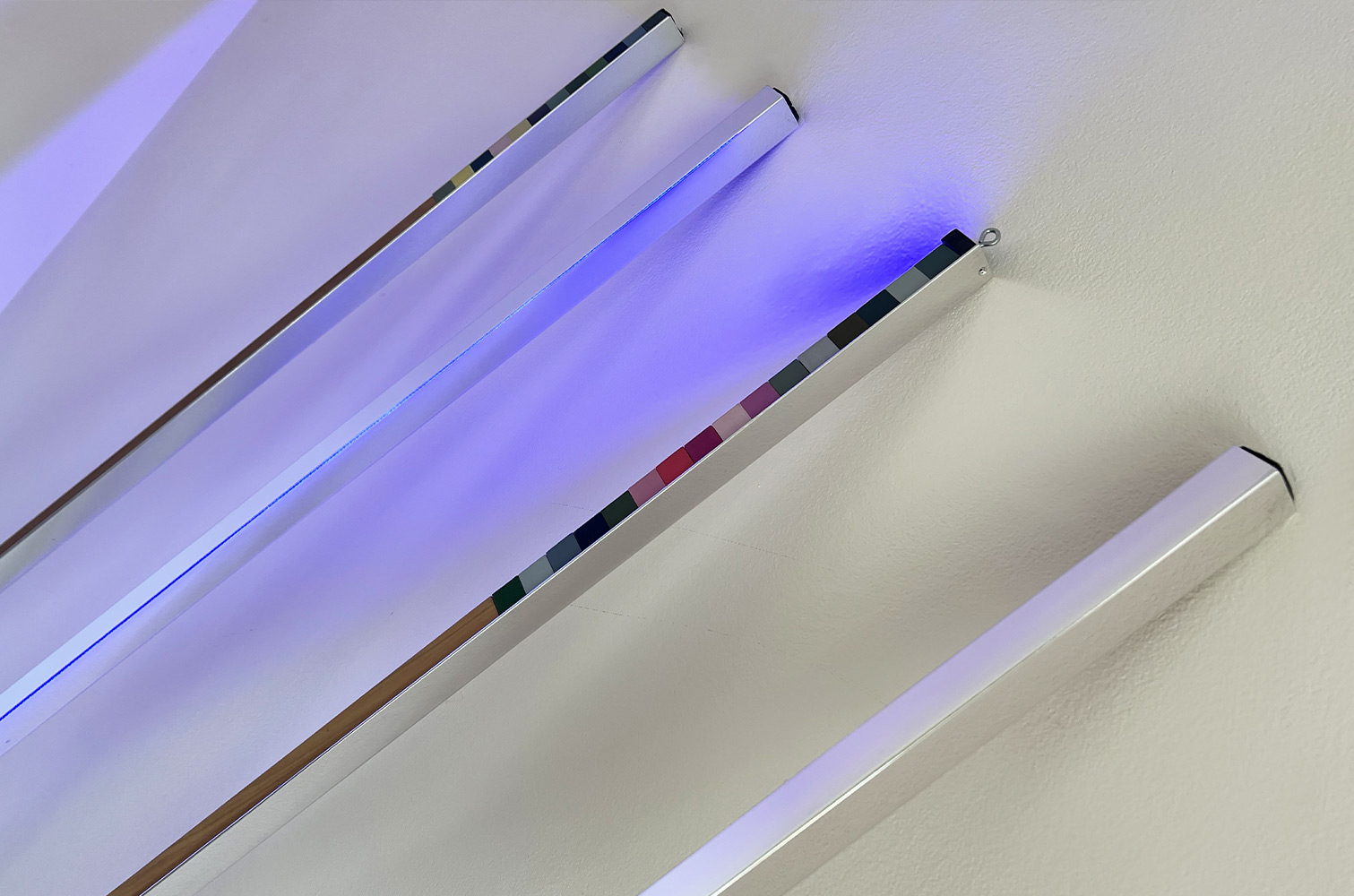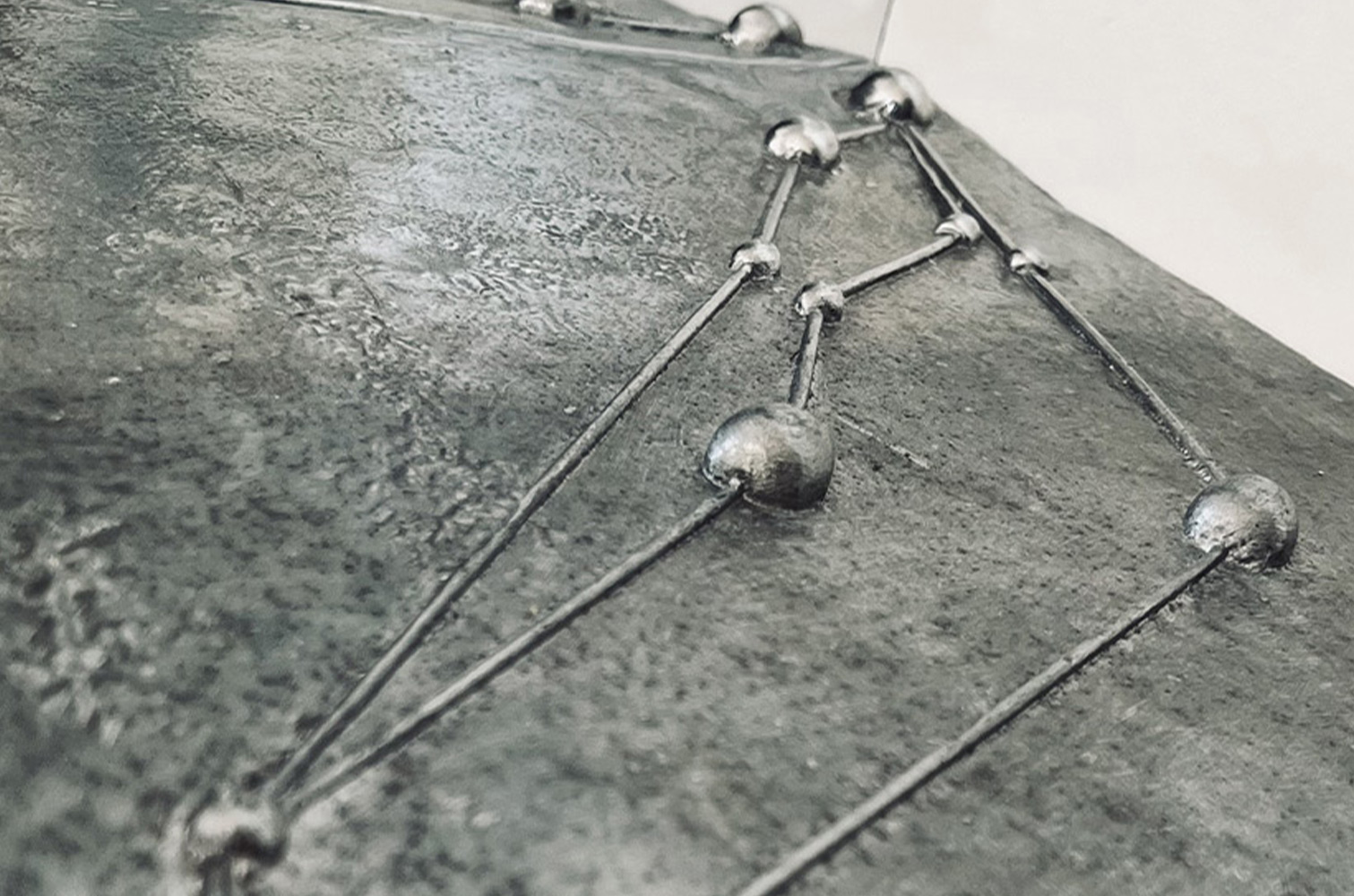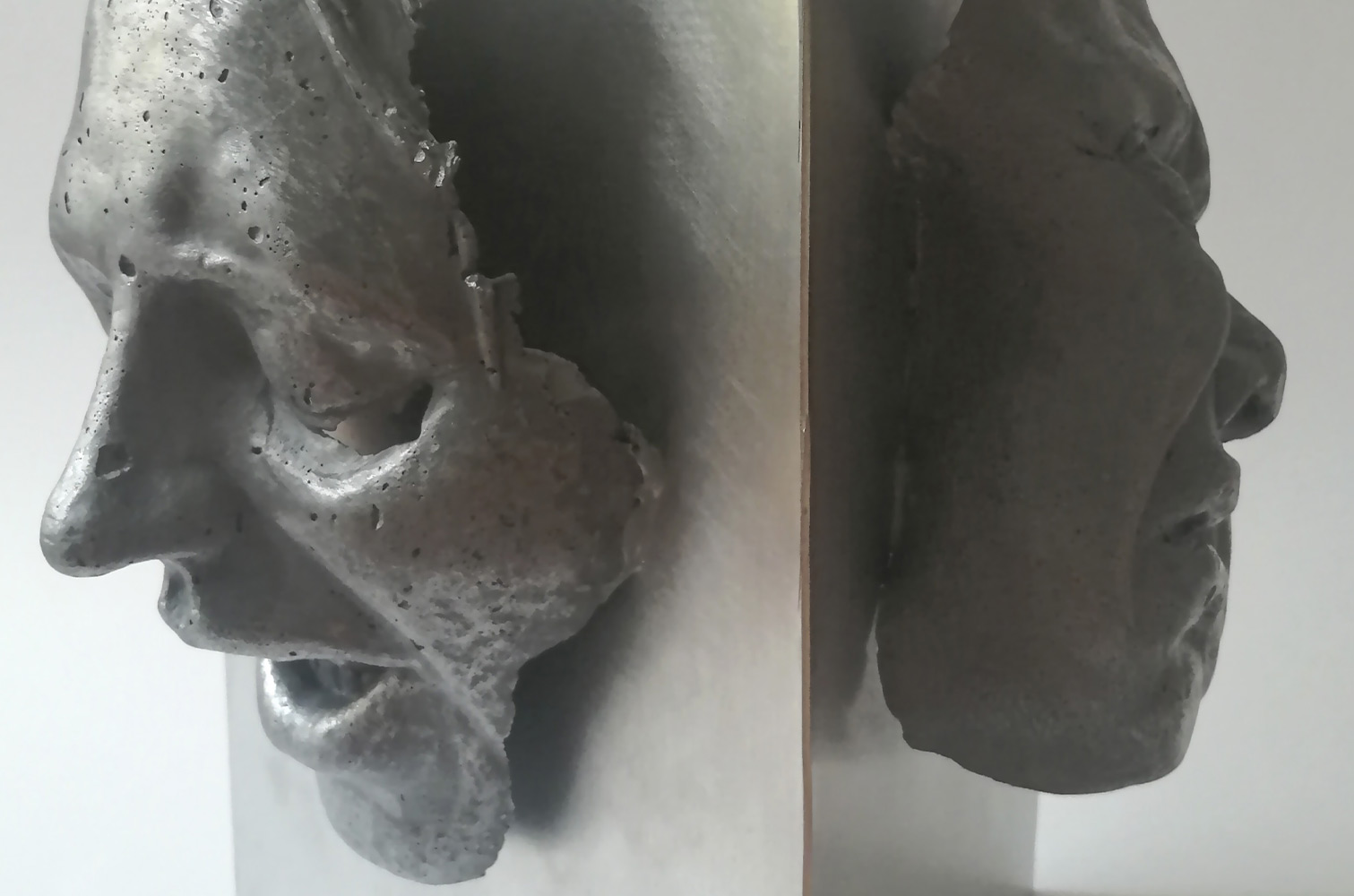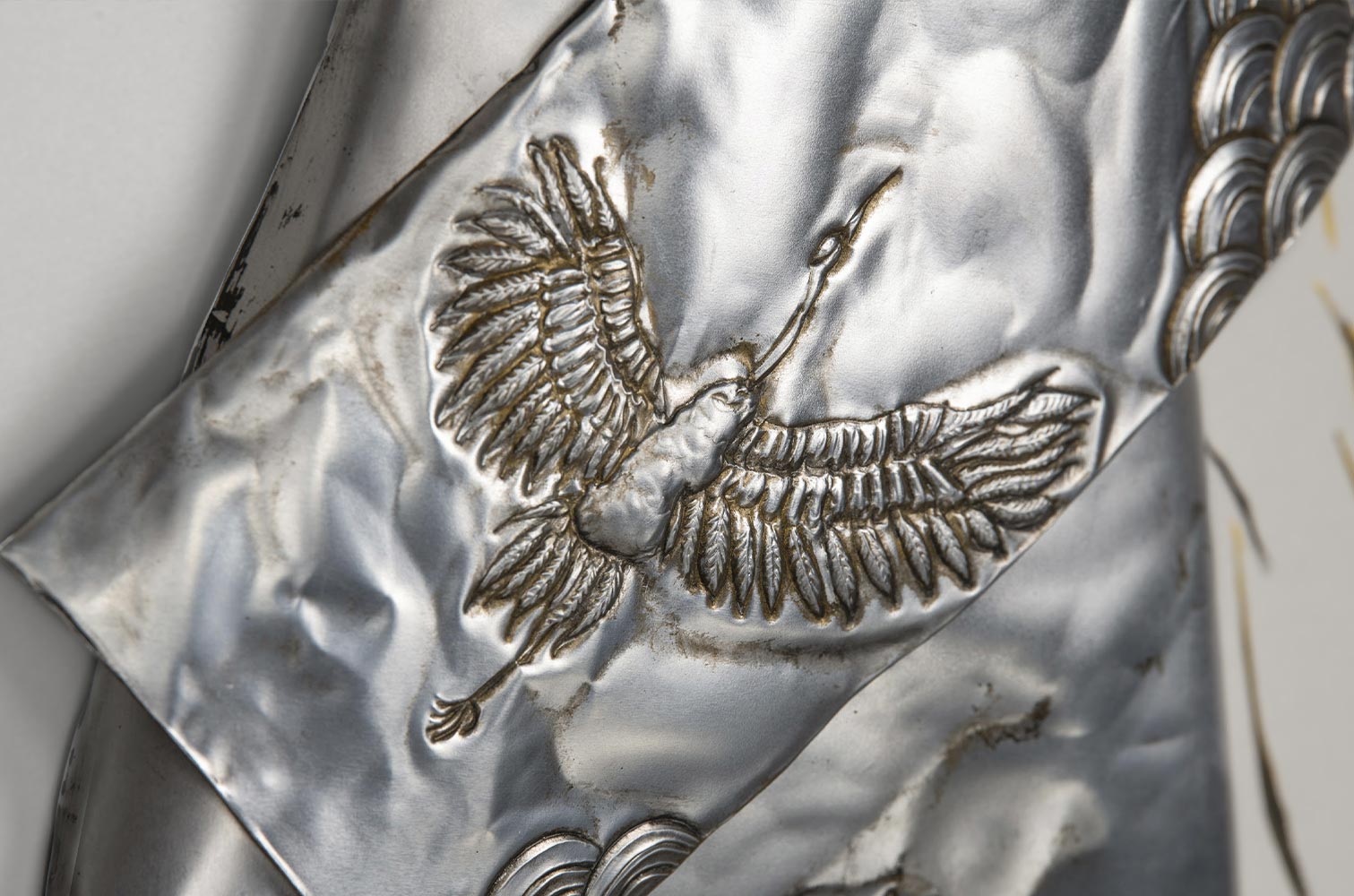COMEL AWARD FINALIST 2018
Interview to Gisella Meo
by Rosa Manauzzi
She was born in Treviso (1936). She lives and works in Rome. In 1960 she graduated from the Academy of Fine Arts in Venice. Her art goes from figurative Expressionism to abstract Expressionism to conceptual style. She uses cuts, folds and modularity applying a rigorous geometry. She works with soft and hard multi-materials. As fiber artist, she created the famous Cilindro mobile (Gubbio, 1979), Maglia umana (Reggia di Caserta, 1982), Tombknitting (1984 and ’86); she organized Il telaio umano (Treviso, 2013 and Rome 2016) and Il telaio urbano (Torre di Bagnaia, 2002) flashmobs. Her book Leviatan participated in the Venice Biennale, in 1978, and in the most important Italian and foreign book-object exhibitions.
Among her most recent personal exhibitions, some were held at Centro di Sarro, Rome (1990); 5th Biennale Donna, Palazzo dei Diamanti, Ferrara (1992); Museo della Donna, Ciliverghe, Brescia (1998); Galleria Miralli, Viterbo (2003); Museo di Santa Caterina, Treviso (2013); Biblioteca Angelica, Rome (2016); Sala Ruspoli, Cerveteri (2018).
Her works can be found, inter alia, at the ICPA Archive of the University of Oxford, at the Museo dell’Informazione, Senigallia, and at the Galleria di Arte Moderna, in Ascoli Piceno (Ancona); in the collection of Contemporary Art, Università di Siena; at the MART in Rovereto; at the National Library of Florence; at the Pecci Museum in Prato; at the National Central Library of Rome; at the Museum of Contemporary Sculpture MUSMA of Matera. As an artist she is present in the volume of History of Italian art of the ‘900, Generazione Anni ‘30, by Giorgio di Genova (Edizioni Bora, 2000) and in the volume La pittura in Italia: 900/3. Le ultime ricerche (texts by Enrico Crispolti, edizioni Electa, 1994).
During the formative years at the Academy of Fine Arts in Venice, a particularly important meeting took place with the painter Tancredi Parmeggiani and the sequential approach to action painting and Spatialism. What had been until then the artistic landmarks and what has resulted in the change of direction?
Tancredi had no connection with the Academy. He was a free and self-taught spirit. As far as he is concerned, I believe he had not even finished the Art School. When I met him, I was attending the second year of the Academy at the Bruno Saetti School in Venice, which I continued to participate in until the end of 1960. My story with Tancredi was a story of Love. Beautiful and vital, lasting one year, in 1957. His attendance, naturally, brought me closer to action painting and Spatialism, but I came to these experiences very gradually, towards the end of the Academy and then, in a total and absolute manner in the African period, 1960-62. So, mine was a gradual evolution, from figurative expressionism to abstract expressionism and later to the conceptualism where I still find myself working.
Le onde del quadrato
In the 1960s your stay in Somalia becomes decisive. Here the all-encompassing presence of nature leads to the execution of great multi-material works, which will be visible in the personal exhibition at the Garesa Museum in Mogadishu in 1961, with a presentation by Mario De Luigi. A newspaper of the time titled: ‘The whole of the intellectual Mogadishu in the solo exhibition of Gisella Meo’. The Minister of Information inaugurated it. Very little is always known about some places, even today that we have many media. For this reason, some places of Art in particular, have the critical function of saying ‘here things happen, you should know…’. What happened in Mogadishu at that time? What were the popular themes and materials? And what is left of that experience in the present art?
Mogadishu at that time was enjoying the independence it had obtained from Italy; there was so much enthusiasm and a swarm of initiatives. A great desire to learn. I was teaching at the Somali High School and the Technical Institute for Surveyors of Somalia. However, as far as contemporary art is concerned, there was still nothing, and that is why my exhibition has aroused so much curiosity and interest. It was the first exhibition of abstract art held in that territory. Today, unfortunately, we know that all that enthusiasm of young Somalia ended very soon, turning into a horrific civil war of destruction and death.
Your move to Rome in 1968 coincides with the enhancement of the geometric shape. You created the square module, and the surfaces are dissolved, emptied, transformed through incision and traction. It is a passage towards the conceptual in which the cuts and the modularities assume characteristics that will remain constant over time. Once back in Italy, a subsequent passage was from nature to man, then a new figurative with simplified and jagged contours. At the same time an essential and definitive geometry. Is geometry an external essence or the investigation that scours the inner motions?
Geometry is an inner essence, it is not an external one. It follows an investigation from the “inside”. Returning to Italy was a strong experience, also lived ‘from within’. A man had come into my life, and the relationship was intense, tearing. I ventured into a profound investigation of my emotions which I then fixed graphically and pictorially. It was an almost spasmodic search that helped me to understand myself by telling about myself. But I was exposing myself, and therefore, at one point I rebelled. I wanted to go out ‘towards others’. An interest in modern theatre aroused, and I discovered Beckett (1964-65). The absurd spaces of his Theatre! An essential setting: a few things with well-defined contours.
Il bidone, Il paravento and L’aquilone. In this period, there is a consistent and eloquent graphics production. There are the square and its diagonals, the circle, the cylinder, the tunnel and the parallelepiped, the window and the kite, in short, all the premises for the next step.
Con Tancredi maternità
The interest in large-scale installations and urban animation interventions took over in the 1970s: Vestire una fontana (Frascati, 1977), Il cilindro mobile (Gubbio, 1979), Le onde del quadrato (Venice, Canal Grande, 1980), La maglia umana (Reggia di Caserta, 1982), Tombknitting (Cerveteri, Etruscan necropolis, 1984-86), Imbragare una torre (Torre di Bagnaia, Viterbo, 2002, on the occasion of the first anniversary of the attack on the Twin Towers). They represent some great signs, almost visible totems. The use of materials in work is varied: from soft materials (paper, plastic, ropes, fabrics) to hard materials (sheet metal, cement, wood). On them, there is an intervention with joints and sequentiality. What is the relationship with matter and how is it chosen and intertwined?
My relationship with matter is a relationship of love and reason. Whenever I choose a material for the completion of a work there is never anything random, everything is reasoned. If I have to get the net of the square (or round) module and make its transparency and fluidity, I choose the more or less light plastic (see Le onde del quadrato, Venice, m. 9 x 9). If, on the other hand, I want to highlight the transition from a square pyramid surface through the traction movement to make the cuts visible, I use paper (see book-object Vuotare la pagina). If instead I want it more consistent and make a sculpture-installation, even if soft, I use the sackcloth (jute) hardened with flatting (see Da soffitto a pavimento, 3 x 3 m.).
But the same module could be achieved in a hefty iron sheet, and put it in an outdoor space (it will rust and will be even better).
I used wood for the Triposaurus because I had to get a joint structure, made of consistent material, in which to be able to visualise the weaving process well (and here I am answering the second part of your question).
As for the cement, I never used it, but I expected it. The object book Square’s square (1979) is deliberately in grey cardboard as it provides, developing it, the possibility of its construction in cement, in a playground for children
In 1978 the book Leviathan, based on folds and rigorous geometry, is the first book-object to have international importance. It participates in the Venice Biennale in the exhibition ‘Materializzazione del linguaggio’, curated by Mirella Bentivoglio. The book is now part of the Special Collection of Rare Books of the Getty Center for the History of Arts and Humanities in Los Angeles. It is only the beginning, as other object-books will follow which will have prestigious locations: the book Vuotare la pagina is now in the same collection and, with the book Square’s square, it is present at the National Museum of Women in the Arts in Washington. The book Vuotare la pagina took part in the IV Bienal de Arte in Medellin (Colombia) and the XVI Bienal de S. Paulo (Brazil).
In 1992 it took part in the exhibition ‘The artist and the book in twentieth-century’ at the MOMA in New York. In 1995, the book Tutto quanto è was at the Biennale di Venezia, as a paste-up, in the exhibition ‘Identità e differenza – libri di artiste’.
In 1981 you were co-author, along with Mirella Bentivoglio, of the book Zero-seme, which will also be present in the exhibition ‘Dalla parola al simbolo’, Palazzo Delle Esposizioni in Rome (1996). What exactly is a book-object and what readings can it encourage?
A book object is an object that has the appearance of a book, but it is something different. Above all, it is not read in the manner of an ordinary book as it may not have any pages nor anything written on it. So, we read it in another way. The message that transmits, the wonder and emotion that makes you feel are the things that matter. The book object is a work of its own, naturally sculptural. Its strength lies in the project and in the idea that determined it, and that is why it could also be serial. Of course, with a limited edition. What readings can it encourage? Naturally the in-depth analysis of this branch of art and that of Visual Poetry in general.
Squares square
The work My module before cuts (1976-2018), is selected for the Seventh edition of COMEL Award. It is a sculpture-installation of 12 aluminum and sheet metal modules of various sizes (from 60 × 60 to 10 × 10). The art critic Ada Patrizia Fiorillo said: ‘a rigorous geometric order sets itself free in the space following precise mental coordinates, which are open, almost in oxymoron to the idea of transformation and, thanks to the material used, to the alteration of every pre-established order. […] The result is an unpredictable interlocking of situations: a labyrinthine body that evokes suggestive perceptual solicitations.’
How does the work come up and how does it evolve until it reaches a final draft?
My work, Il mio modulo prima dei tagli (1976-2018) is a square surface, folded and refolded in the diagonals. During the first performances, in 1976, I experienced all its phases, moment by moment, with the emotion and the curiosity of a researcher. We know that when a shape works, it will always work, from beginning to end. So here is how I can lock my form even before the cuts, thus only giving importance to the folds. We are always in the field of geometry, an elementary geometry: the square. We can fold it and fold it again into the diagonals and then reopen it. This operation is also simple and straightforward; the effect is plastic, airy and ‘moving’.
I made the geometry soft, but to render this effect well and then be able to visualise it, it was necessary to work on a hard surface, a sheet, so that the operation remained blocked in time and space. A module conceived in this way by itself is a finished work, but if I want to continue it and do other modules that are the same but of various sizes, I can get an installation that can have a sequential or apparently random order, freer and in this way every time we have a different setting. I chose this second set for the COMEL Award.
To frame Gisella Meo’s art in a mindset is difficult. You are always careful to adhere to the artistic possibilities but with entirely personal freedom and above all with the will to undermine every certainty, yet affirming the symbol, the myth, the matter. What if we wanted to look for an all-encompassing definition?
Starting in the 1970s, I can frame myself in the field of conceptual art. I work on the lines of Visual Poetry with object books and artist books, that of installations and interventions in the territory and urban animation, and that of Fiber art including also human frames (see the various flashmob). I consider myself an artist ‘never out of time’. From the beginning, I showed my vitality and desire to renew myself, moving naturally in my personal experience and my historical period.

